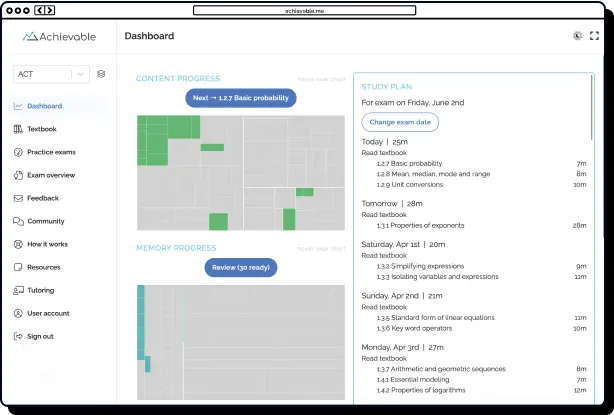
USMLE Step 1: Understanding risk factors for chronic diseases and cancers




Some topics are indispensable when preparing for the USMLE (United States Medical Licensing Exam) Step 1, and understanding the risk factors for chronic diseases and cancers is a top priority. USMLE questions often include clinical scenarios that require you to identify the key contributors to major chronic illnesses. The test is known for drawing on disciplines such as epidemiology, pathology, and direct patient care, particularly in prominent areas like cardiology and oncology. Therefore, well-rounded knowledge of the signs and symptoms of various diseases, as well as prevention and treatment strategies, is absolutely critical.
In this blog post, you’ll find a narrative guide to spotting these risk factors, not just a memorization checklist, so you can tackle topics on the USMLE with confidence. To help you remember important details and fine-tune your study strategy, we’ll break things down into three digestible sections, including practical tips along the way so you can perform your best.
Chronic Diseases: The big three
Chronic diseases such as cardiovascular disease, type 2 diabetes, and chronic obstructive pulmonary disease (COPD) are heavily tested on both hospital admissions and medical exams. These long-term and severe illnesses can progress silently over many years, driven by interconnected risk factors that include lifestyle habits, inherited genetics, and environmental exposures. Advanced phases of these diseases, such as stage 4 COPD, are marked by debilitating symptoms and a significant impact on quality of life. Understanding how these diseases develop and recognizing their defining features are key to effective management and prevention.

Cardiovascular disease
Cardiovascular disease, including heart attacks and strokes, is among the most frequently tested topics in the USMLE Step 1. Hypertension is the classic silent culprit in these cases, steadily increasing pressure against vessel walls and setting the stage for atherosclerosis, or arterial obstruction. Smoking accelerates the process by introducing toxins that injure endothelial cells, precipitating rapid plaque development.
Diet is another crucial element in determining a person’s risk for cardiovascular disease. A high intake of saturated fats results in dyslipidemia, marked by elevated LDL cholesterol and insufficient HDL levels, which prevents the body from properly removing lipid debris. Diabetes mellitus adds complexity, given that high blood glucose damages vascular linings, a recurrent mechanism in cardiovascular disease. Obesity, especially excessive visceral fat around organs, drives inflammation and insulin resistance, further aggravating cardiovascular risk profiles.
A sedentary lifestyle is another common factor, as it disrupts the body’s ability to maintain healthy blood pressure and cholesterol levels. Risk increases with age (men over 45 and women over 55 are more prone to cardiovascular illness), as indicated by numerous USMLE questions focusing on age-related trends. Family history of premature heart disease, such as a father suffering a heart attack before age 55, also presents genetic risk considerations relevant to both the USMLE and real-life patient care. For effective Step 1 preparation, recalling the Framingham Risk Score is necessary; this tool considers age, cholesterol profiles, blood pressure, smoking, and diabetes, the very elements interwoven throughout USMLE Step 1 cardiology questions.

Type 2 diabetes
Type 2 diabetes mellitus develops primarily due to insulin resistance that builds up progressively over time. Envision a patient carrying excess body weight, especially central obesity, where abdominal fat, in particular, significantly fuels insulin resistance by impeding the body’s ability to efficiently move glucose into cells. A lack of physical activity further exacerbates the problem, as sedentary muscles require less glucose uptake, thereby intensifying hyperglycemia.
A diet high in sugar-sweetened beverages and refined carbohydrates places additional metabolic stress on the pancreas, making it more challenging to achieve sustainable blood sugar control. Hypertension and dyslipidemia commonly co-occur, rounding out the metabolic syndrome triad. Genetic background cannot be overlooked: individuals with a family history of diabetes face increased risk, and people of certain ethnic groups are more prone to developing diabetes than others. African Americans, Hispanics, Native Americans, and South Asians demonstrate greater susceptibility, highlighting the need for targeted efforts. Furthermore, a previous diagnosis of gestational diabetes, which occurs during pregnancy, can indicate increased risk later in life.
From an examination standpoint, always remember the diagnostic criteria crucial to understanding diabetes: a Hemoglobin A1c level of 6.5% or higher, a fasting plasma glucose level of at least 126 mg/dL, or a 2-hour plasma glucose level of 200 mg/dL or greater during an oral glucose tolerance test. Recognizing these values is not just critical for diagnosis; it sets the foundation for prompt treatment and future clinical advancements.

Chronic obstructive pulmonary disease (COPD)
COPD is a group of chronic lung diseases that significantly impairs breathing and is closely associated with the risk of developing additional, severe pulmonary diseases like lung cancer. Smoking remains the leading cause of COPD, as each cigarette introduces harmful irritants into the lungs, triggering chronic inflammation that narrows the airways and destroys alveoli. These symptoms are characteristic of the centrilobular pattern of emphysema, a common type of COPD. Limiting tobacco exposure is central among valuable ways to reduce the risk of severe COPD progression.
Unfortunately, the risks associated with COPD extend beyond smoking. Individuals working in environments with occupational exposure to dust, chemicals, or toxic fumes, such as miners or factory employees, may develop COPD after prolonged contact with damaging airborne particles. Persistent exposure to air pollution, particularly in urban areas, can also undermine lung health and contribute to long-term airway damage.
On the genetic spectrum, alpha-1 antitrypsin deficiency represents a critical but less common cause of early-onset COPD, especially among young adults. This inherited disorder leads to panlobular emphysema, where damage affects entire lung lobules rather than the centrilobular regions only, increasing both disease severity and long-term risk. This factor is particularly vital in understanding variations of COPD, where widespread destruction of lung tissue is a defining feature.
Age plays a notable role as well, since the impact of hazardous exposures accumulates over years, increasing vulnerability to both chronic obstructive airway disease and related malignancies. For Step 1 exam preparation, it’s essential to link cigarette smoking with centrilobular emphysema and associate alpha-1 antitrypsin deficiency with panlobular emphysema. Understanding these disease mechanisms is fundamental, not only for exam success but also for building the knowledge needed in practical, medical settings.

Cancers: Unraveling the triggers
Cancers are a staple of Step 1, and their risk factors reveal a narrative of environmental exposures, genetic predispositions, and lifestyle choices. Let’s examine four major cancers: lung, colorectal, breast, and liver cancer.
Lung Cancer
Lung cancer remains the deadliest type of cancer, making risk assessment a critical component of early detection and prevention strategies. Smoking stands out as the primary risk factor, with cumulative impacts dramatically increasing the likelihood of developing lung malignancies. Carcinogens in tobacco smoke induce DNA mutations in lung cells, paving the way for cancerous changes. In fact, about 85% of lung cancer cases are directly related to smoking, though it is important to recognize that non-smokers are also at risk (especially those exposed to secondhand smoke).
Impactful ways to prevent lung cancer extend beyond smoking cessation. Environmental exposures, such as pollution, play a significant role in the development of pulmonary tumors. Radon, a radioactive gas that can infiltrate homes undetected, poses a silent threat by damaging lung DNA over time. Occupational hazards further elevate risk; workers exposed to asbestos, arsenic, or diesel exhaust face higher rates of lung cancer. Urban air pollution also contributes, particularly for individuals residing in heavily polluted cities.
Family history is another crucial element in lung cancer risk assessment, as genetic predisposition can amplify susceptibility. A personal history of lung scarring from conditions like tuberculosis or pulmonary fibrosis may further increase risk. For Step 1, recall that small-cell lung cancer is almost exclusively found in smokers, whereas adenocarcinoma, often linked to EGFR mutations, may develop in non-smokers.
Colorectal (colon) cancer
Colorectal or colon cancer is a common and deadly disease with risk factors that often overlap with those for other cancers. How to prevent colorectal cancer, like other chronic diseases, starts with healthy lifestyle interventions. Diets rich in red or processed meats and low in fiber can stimulate gut inflammation, creating an environment where colorectal cancer may develop. Obesity is a significant concern, as it promotes insulin resistance and chronic inflammation, two processes associated with the development of malignant cells in the colon. Smoking and heavy alcohol use further elevate risk, while a sedentary lifestyle allows these harmful influences to persist unchecked.
As people age, particularly after 50, the risk of developing colorectal cancer rises sharply, prompting experts to recommend screening beginning at age 45. A family history of colorectal cancer doubles your susceptibility, with inherited conditions like Lynch syndrome or familial adenomatous polyposis (FAP) indicating even higher and more aggressive risk. Remember, FAP is tied to APC gene mutations, and Lynch syndrome increases not only colorectal but also endometrial (uterine) cancer risk.
Chronic inflammation stemming from conditions such as ulcerative colitis or Crohn’s disease compounds the likelihood of malignancy in colon tissue. For those wondering what colon cancer pain feels like, symptoms can range from vague abdominal discomfort to more pronounced pain as the disease progresses. Being vigilant about preventive measures, like increasing dietary fiber, staying physically active, and moderating alcohol, can lower the odds of not only colorectal cancer but also related risks for other diseases.
Breast cancer
Breast cancer risk is shaped by a combination of hormonal, genetic, and lifestyle influences. Women who begin menstruating early or experience menopause later face prolonged exposure to estrogen, which can stimulate breast tissue growth and subsequently raise breast cancer risk. Similarly, women who do not have children or have their first pregnancy after age 30 also experience a higher risk due to extended hormone exposure. Long-term use of hormone replacement therapy and obesity after menopause, when adipose tissue (fat cells) produces more estrogen, are additional contributors that can make preventing breast cancer more challenging.
Even moderate alcohol consumption has been shown to elevate risk. On the genetic side, mutations in the BRCA1 and BRCA2 genes dramatically increase the chances of developing breast and ovarian cancers. A family history of breast cancer, particularly among first-degree relatives, should prompt frequent screening. Additionally, the risk of developing this form of cancer rises with age, especially after menopause. For Step 1, remember that BRCA1 mutations are frequently associated with triple-negative breast cancer, and these mutations are inherited in an autosomal dominant fashion (a genetic mutation passed down from parent to child). By understanding both genetic predispositions and modifiable lifestyle factors, individuals can make informed choices to prevent breast cancer and reduce overall risk.
Liver cancer
Hepatocellular carcinoma (HCC), commonly known as liver cancer, frequently develops as a consequence of chronic liver damage. Key factors contributing to the risk of liver cancer include long-standing hepatitis B and C infections, which drive persistent inflammation and increase the likelihood of cirrhosis and ultimately cancer. Notably, hepatitis B infection can directly cause HCC even in patients without cirrhosis, while hepatitis C usually leads to cancer after cirrhosis has developed. Heavy alcohol use contributes to alcoholic cirrhosis, further elevating the risk of liver cancer and negatively impacting the liver cancer survival rate. Non-alcoholic fatty liver disease, closely associated with obesity and metabolic syndrome, is rapidly becoming a leading cause of chronic liver inflammation and cirrhosis worldwide.
Exposure to aflatoxin, a potent carcinogen produced by moldy grains, remains an important but less common cause of liver cancer in certain regions. Men face a greater risk than women, and any chronic condition leading to cirrhosis, such as hemochromatosis or Wilson’s disease, significantly raises the risk for developing HCC. While the pain experienced in liver cancer can sometimes resemble that of colon cancer, with vague abdominal discomfort or a dull ache in the right upper quadrant, it is important to remember that symptoms vary widely between individuals and cancer types. For Step 1 preparation, remember that hepatitis B is linked to direct oncogenesis (the formation of tumors), whereas cirrhosis from any etiology contributes broadly to the risk of HCC.
How to study risk factors for the USMLE Step 1
Disease risk factors are a large portion of USMLE Step 1 content, frequently appearing because they integrate epidemiology, pathophysiology, and clinical vignettes. Often, questions on disease susceptibility related to lifestyle factors, genetic predisposition, and overall health are presented as hypothetical clinical scenarios. Approach these problems by thinking like a detective, piecing together the clues presented. Begin by organizing risk factors into modifiable (such as smoking or unhealthy diet) and non-modifiable (like age or genetic predisposition) categories. This structure streamlines recall under exam pressure and forms the basis of successful intervention. Mnemonics can be especially helpful: consider “SMASH” for cardiovascular disease: Smoking, Metabolic syndrome, Age, Sedentary lifestyle, and Hypertension. This tool helps you memorize key associations relevant to both chronic disease and cardiology questions.
Understanding the underlying mechanisms behind each risk factor is just as important as memorizing complicated terms and symptoms. For example, in lung cancer risk assessment, cigarette smoking is critical: the polycyclic aromatic hydrocarbons in tobacco smoke not only irritate the respiratory tract but also induce DNA mutations that drive oncogenesis. Connecting risk factors to their biological mechanisms will help you answer questions that require identifying the most likely cause of a disease in a clinical scenario. Consistent practice is crucial: utilize resources like UWorld or First Aid, which present clinical vignettes (e.g., a 60-year-old smoker with weight loss) and ask you to pinpoint the primary risk factor. This approach reinforces pattern recognition, a skill needed for USMLE Step 1 cardiology questions and beyond.
Prioritize common associations that frequently appear on the exam, not only for the conditions above but for any disease that may be tested. For instance, asbestos exposure is classically linked to mesothelioma, HPV infection is associated with cervical cancer, and Lynch syndrome significantly increases the risk of colorectal and endometrial cancers. These connections are foundational for understanding risk factors across multiple organ systems, making them indispensable for your Step 1 preparation and your practice as a physician.

The bottom line
Recognizing risk factors for chronic diseases and cancers is not just about passing exams: it’s central to preventive medicine and clinical practice as a doctor. By weaving these risks into memorable narratives, such as the story of a smoker who develops COPD or a patient with a BRCA mutation, you’ll strengthen your ability to excel in USMLE Step 1 cardiology questions and other domains. Consistent review, connecting concepts, and targeted practice are key components of how to study for USMLE Step 1 effectively. With diligent preparation, you’ll build the knowledge base needed for both exam success and future clinical excellence.

